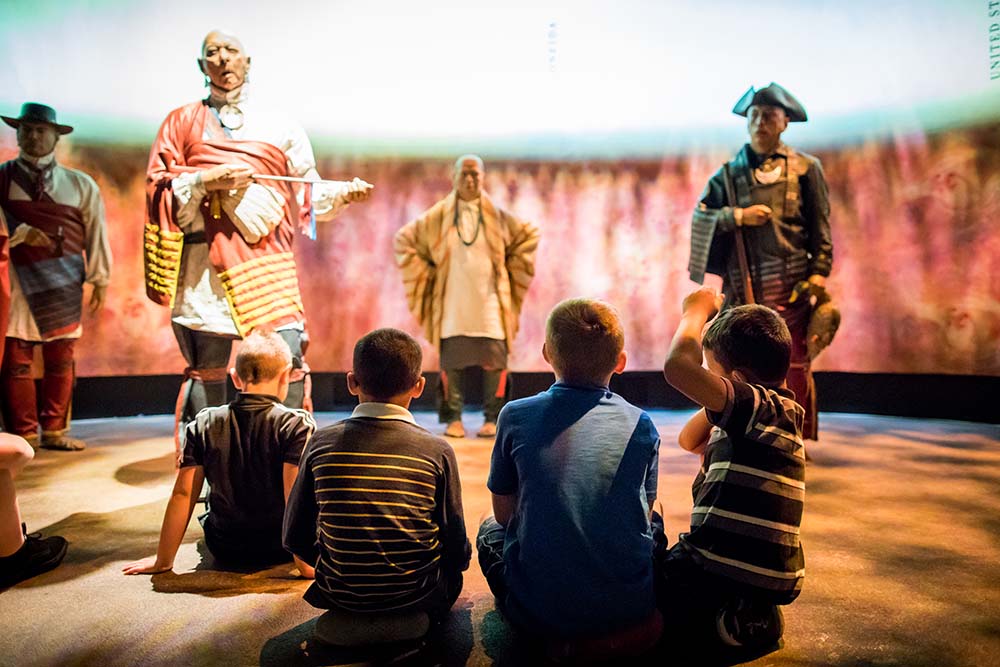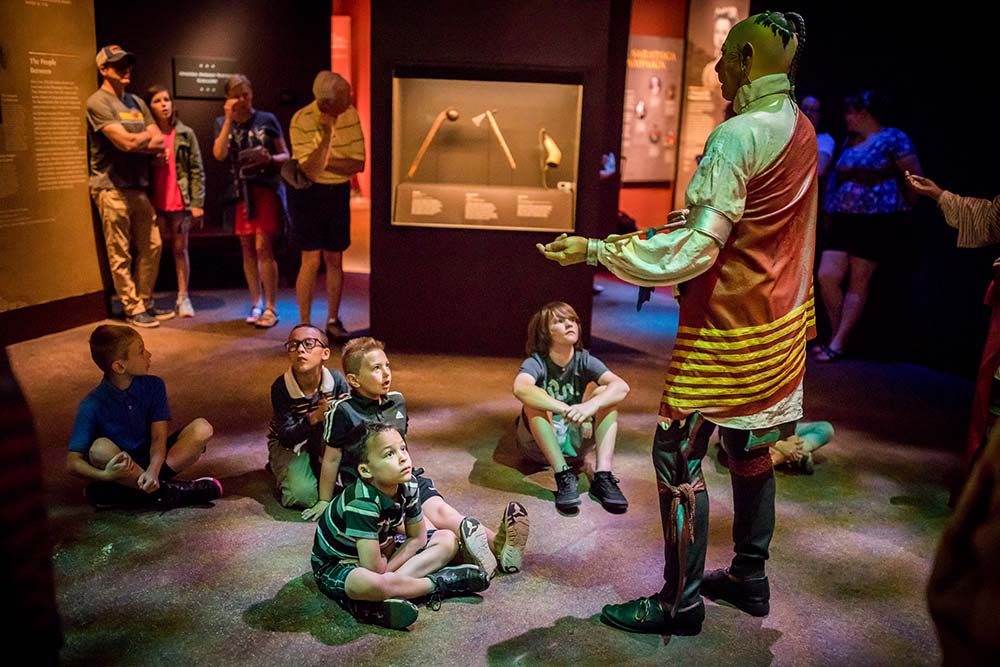
- Details
- By Museum of the American Revolution
Philadelphia’s Museum of the American Revolution Elevates Stories of Native People from the Revolutionary Era
More than 250,000 Native Americans lived east of the Mississippi River during the Revolutionary era. They formed more than 80 nations and spoke dozens of languages. The decades of political turmoil and warfare that divided Great Britain and its colonies—and led to the creation of the United States—profoundly affected native people.
The Museum of the American Revolution, located in the heart of historic Philadelphia, takes an honest, “warts-and-all” approach to exploring the personal stories of native people who were involved in the Revolution. The Museum partnered with native groups, including the Oneida Indian Nation, to bring these stories to life in a nuanced way.
“The Museum of the American Revolution explores the lesser-known stories of the creation of the United States as we know it,” said Museum President and CEO Dr. R. Scott Stephenson. “History is rarely simple and we invite visitors to wrestle with those complexities in our nation’s history, many of which are still present today.”
In the Museum’s immersive, multimedia Oneida Nation Gallery, visitors can explore the Oneida Indian Nation’s debate over whether to break away from the Six Nations Confederacy to support the Revolutionary cause. Visitors can listen as recreated figures representing Oneida men and women discuss the difficult choices they faced.
Each of the figures in the gallery is based on a real Oneida person and dressed in garments representative of what they would have worn in the 1770s, combining native fashion and Euro-American textiles and trade goods. Their words are drawn from a variety of sources and written in the style recorded in Native American speeches, treaty negotiations, and conversations.
In the Museum’s galleries, visitors discover the stories of people like Tyonajanegen (“Two Kettles Together”), an Oneida woman who fought alongside her husband in the violent Battle of Oriskany during the 1777 Saratoga Campaign.
They also learn about Akiatonharonkwen, also known as Louis Cook, who was one of the highest-ranking Native American officers in the Continental forces during the Revolutionary War. Born to an African American father and Abenaki Indian mother, Akiatonharonkwen fought in the French and Indian War (1754-1763) as a young man. Visitors discover the path he chose in the Revolutionary War as both British and Revolutionary leaders courted him as an ally.
In another gallery, visitors learn about the Seneca leader Ki-On-Twog-Ky (Cornplanter) and can touch a reproduction wampum belt similar to those used to record agreements and speeches delivered in councils.

In the Museum’s final gallery, visitors can look into the eyes of an American Indian veteran of the Revolutionary War. Thaonawyuthe, known as Chainbreaker, fought alongside Loyalists and Native Americans against Revolutionaries and Oneida Indian warriors at the 1777 Battle of Oriskany. He sat for this rare daguerreotype (an early form of photography) before his death in 1859.
Every day at 3:30 p.m., the Museum presents the 25-minute documentary film “The People of the Standing Stone,” which explores the crucial but little-known history of the extraordinary contributions of the Oneida people who chose to commit themselves to the Revolutionary cause. The powerful film was directed by Emmy Award-winning director Ric Burns and narrated by Academy Award-winning actor Kevin Costner.
Each October, the Museum explores Native American history and culture during its annual Indigenous Peoples Weekend celebration. The celebration includes traditional Native American dance performances, hands-on demonstrations by native craftspeople, and other family-friendly activities. This year’s celebration takes place from Saturday, October 8 – Monday, October 10, 2022.
For more information, visit www.AmRevMuseum.org.
Help us tell the stories that could save Native languages and food traditions
At a critical moment for Indian Country, Native News Online is embarking on our most ambitious reporting project yet: "Cultivating Culture," a three-year investigation into two forces shaping Native community survival—food sovereignty and language revitalization.
The devastating impact of COVID-19 accelerated the loss of Native elders and with them, irreplaceable cultural knowledge. Yet across tribal communities, innovative leaders are fighting back, reclaiming traditional food systems and breathing new life into Native languages. These aren't just cultural preservation efforts—they're powerful pathways to community health, healing, and resilience.
Our dedicated reporting team will spend three years documenting these stories through on-the-ground reporting in 18 tribal communities, producing over 200 in-depth stories, 18 podcast episodes, and multimedia content that amplifies Indigenous voices. We'll show policymakers, funders, and allies how cultural restoration directly impacts physical and mental wellness while celebrating successful models of sovereignty and self-determination.
This isn't corporate media parachuting into Indian Country for a quick story. This is sustained, relationship-based journalism by Native reporters who understand these communities. It's "Warrior Journalism"—fearless reporting that serves the 5.5 million readers who depend on us for news that mainstream media often ignores.
We need your help right now. While we've secured partial funding, we're still $450,000 short of our three-year budget. Our immediate goal is $25,000 this month to keep this critical work moving forward—funding reporter salaries, travel to remote communities, photography, and the deep reporting these stories deserve.
Every dollar directly supports Indigenous journalists telling Indigenous stories. Whether it's $5 or $50, your contribution ensures these vital narratives of resilience, innovation, and hope don't disappear into silence.
 The stakes couldn't be higher. Native languages are being lost at an alarming rate. Food insecurity plagues many tribal communities. But solutions are emerging, and these stories need to be told.
The stakes couldn't be higher. Native languages are being lost at an alarming rate. Food insecurity plagues many tribal communities. But solutions are emerging, and these stories need to be told.
Support independent Native journalism. Fund the stories that matter.
Levi Rickert (Potawatomi), Editor & Publisher
